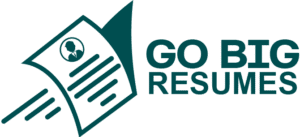Comprehensive Guide to Jobs Resume Templates
In today’s fiercely competitive job market, your resume is often the first and possibly the only chance you have to make an impression on potential employers. To stand out from the crowd, you need more than just a list of your skills and experiences—you require a professional, tailored, and visually appealing curriculum vitae (CV). This comprehensive guide explores the world of jobs resume templates, shedding light on how to choose, customize, and optimize them for maximum impact. From industry-specific formats to platforms like Google Docs and Canva, you’ll learn how to craft resumes that resonate with recruiters and ATS systems alike.
Whether you’re a high school student applying for your first part-time role, a seasoned professional seeking a career change, or someone with no experience trying to get noticed, this article covers every aspect of selecting the perfect work resume templates. We’ll explore different types of resume templates, their benefits, design tips, and industry-specific formats—equipping you with the knowledge to create a compelling employment application that truly represents your candidacy.
The Role of a Well-Structured Resume
A well-structured resume acts as a marketing tool that highlights your unique value proposition to prospective employers. It’s not merely about listing your qualifications; instead, it involves presenting your credentials in a way that aligns with job requirements and industry standards.
The role of a professional layout in your resume cannot be overstated. A cluttered or poorly organized resume can lead to instant rejection, regardless of your actual skills or experiences. Conversely, a clean, strategically formatted document guides the recruiter’s eye through your most important achievements, making it easier for them to identify your fit for the role.
Effective resume structure enhances readability, ensures ATS compatibility, and demonstrates your professionalism. It shows that you understand industry expectations and are serious about securing the position. Using layout templates designed for specific industries or career levels can significantly streamline this process, allowing you to focus on content while maintaining an attractive format.
Benefits of Using Resume Templates
Resume templates serve as invaluable tools for job seekers at all levels by simplifying the resume creation process. They provide a foundation built on best practices for layout, formatting, and content placement, saving time and effort that would otherwise go into designing from scratch.
One key benefit is consistency. Templates ensure that your contact information, career summary, skills section, work experience, and education credentials are arranged logically and professionally. This consistency makes your resume more scannable, especially for HR personnel who review hundreds of applications.
Another advantage is customization. Many industry-specific formats or platform-based templates—like those from beamjobs or Harvard-style CVs—allow you to tailor your resume according to the role you’re applying for. This flexibility increases your chances of passing ATS scans and catching the eye of human recruiters.
Most importantly, using a reputable template elevates your overall CV design. Visual appeal influences perception, and a polished resume can differentiate you from candidates who neglect presentation. Whether you opt for a simple, blank, or creative template, the core idea remains: templates help present your qualifications in a compelling, professional manner.
How Templates Facilitate Quick Customization
Time efficiency is crucial when applying for multiple jobs, especially in competitive fields. Resume templates empower you to quickly adapt your document for each opportunity without starting from scratch.
By filling in predefined sections such as skills section, work experience, education credentials, and personal statement, you save significant time and reduce errors. This streamlined process encourages personalization—tailoring your career summary or candidate profile to match the specific language and keywords of each job description.
Templates also provide a visual guide to highlight your most relevant qualifications. For example, a job resume template for high school students emphasizes educational background and volunteer work, whereas a professional layout for seasoned professionals showcases extensive work experience and industry certifications.
Moreover, many platforms like Google Docs and Canva offer easy editing options, enabling real-time modifications. This flexibility is particularly useful when tailoring your resume for different sectors—such as switching between a industry-specific format for healthcare versus technology—without sacrificing design integrity.

Types of Resume Templates
The landscape of jobs resume templates is diverse, catering to different career stages, industries, and personal preferences. Selecting the right type depends on your target role, level of experience, and the format that best presents your qualifications. Understanding these categories helps you make informed decisions and find templates that align perfectly with your career goals.
Job Resume Templates for Different Industries
Different industries demand different resume styles to effectively communicate a candidate’s suitability. For example:
Creative industries like advertising or graphic design benefit from canva templates featuring creative design elements and bold visuals.
Corporate sectors such as finance or law favor professional layout templates with clean lines, conservative fonts, and well-structured sections.
Tech roles might prefer modern layout templates emphasizing skills and projects, highlighting one’s technical prowess. Matching your resume style to your industry not only boosts your chances but also demonstrates your understanding of sector expectations. Industry-specific resume formats may include specialized sections like certifications, portfolios, or technical skills, which should be emphasized accordingly.
Work Resume Templates – Tailored to Career Paths
Your work resume templates should reflect your career trajectory and aspirations. Entry-level templates often focus on education, internships, or volunteer experience, and use job resume template no experience variants designed for recent graduates or those transitioning careers.
Mid-career professionals might select professional layout templates that emphasize leadership roles, accomplishments, and industry credentials. For those shifting industries, adaptable industry-specific formats allow you to reposition your skills and experiences in a relevant context.
Using beamjobs resume templates or Harvard-style formats can lend credibility and clarity, especially when showcasing extensive work histories or advanced degrees. These templates are designed to frame your employment application in the most compelling light, aligning your story with what employers seek.
Job CV Templates vs. Resumes: Key Differences
Understanding the distinction between a CV (curriculum vitae) and a resume is fundamental when choosing the right job CV templates. Generally, a CV is comprehensive and detailed, often used in academia, research, or international applications, while a resume is concise and tailored to specific roles.
CV templates tend to extend beyond one page, including extensive lists of publications, conferences, awards, and research experience. Resume templates focus on brevity, clarity, and relevance, usually limited to one or two pages.
Matching your document type with the job application’s expectations is critical. For academic positions, a detailed cv design with industry-specific elements is essential. Conversely, for most industry roles, a sharp, simple job resume template suffices, emphasizing key competencies and achievements.
Popular Platforms for Resume Templates
Choosing the right platform to access or create your resume templates simplifies the process and enhances the final product’s visual appeal. Several online solutions cater to different styles, customization levels, and user needs, making it easier to craft a professional layout aligned with your goals.
Google Docs: Accessibility and Ease of Use
Google Docs has become a go-to platform thanks to its accessibility, cloud storage, and collaboration features. Its free job resume template google docs library includes various formats suitable for different industries and experience levels.
One of Google Docs’ strengths lies in its real-time editing and ease of sharing. You can invite mentors or peers to review your resume and suggest improvements, ensuring your document is polished before submission.
Additionally, Google Docs offers layout templates that are fully customizable. This flexibility allows you to modify fonts, colors, and sections to better suit your personal branding or industry standards. Its compatibility with other Google services simplifies managing multiple versions and updates.
Canva: Creative Designs for Visual Appeal
Canva revolutionizes resume aesthetics by providing design elements that enhance visual storytelling. Its job resume template canva collection encompasses everything from minimalist styles to vibrant, creative layouts, ideal for fields like advertising, media, or design.
Canva’s intuitive drag-and-drop interface allows users to customize templates effortlessly, adding icons, images, and color schemes that align with personal branding. This is especially beneficial for entry-level applicants or creatives looking to stand out visually.
While some templates are free, premium designs and elements are available for purchase. Using Canva’s industry-specific formats, you can craft a candidate profile that communicates your personality along with your professionalism.
Indeed: User-Friendly Options for Job Seekers
Indeed offers a straightforward solution for job seekers who want quick, effective resume templates integrated into their job search process. Their job resume template indeed options are optimized for ATS compatibility and designed to highlight essential qualifications efficiently.
Because of its focus on employment applications, Indeed’s templates emphasize simplicity and clarity, making it easy to upload and submit directly through the platform. These templates often include sections like contact information, skills, and work experience, structured to pass automated scans.
Furthermore, Indeed provides guidance on how to improve your resume, helping you craft personal statements and job descriptions that align with industry standards. This synergy streamlines the entire job application journey.
Tailoring Your Resume Template
Customizing your jobs resume examples and templates to reflect your unique background and the specific role you seek greatly improves your chances of landing interviews. Tailoring involves adjusting content, emphasizing relevant experiences, and selecting appropriate layout templates based on your career stage and industry.
High School Student Resume Templates
For high school students entering the workforce or applying for internships, a job resume template for high school student should focus on coursework, extracurricular activities, volunteer work, and transferable skills.
Despite limited formal work experience, these resumes should showcase enthusiasm, work ethic, and soft skills such as teamwork, communication, or leadership. Simple job resume template simple designs work well here, providing clarity without overwhelming detail.
Highlighting academic achievements and any part-time jobs or community involvement can create a compelling narrative. The goal is to demonstrate reliability and motivation, even with minimal formal experience.

Entry-Level Resume Templates for Those with No Experience
Candidates with no experience face the challenge of creating a job resume template no experience that still proves their readiness and potential. Focus on transferable skills, education, volunteer work, and relevant coursework.
Opt for blank or simple templates that prioritize clarity. Incorporate sections like personal statement or career objective to outline your goals and enthusiasm. Highlight soft skills such as adaptability, problem-solving, and eagerness to learn.
Utilize formatting tips to make your resume scannable, using bullet points and consistent font styles. Remember, employers value attitude and potential, so craft your resume to reflect your passion for growth.
Simple and Clean Resume Templates for Professional Use
For seasoned professionals or those applying to corporate roles, a job resume template simple with a professional layout ensures your qualifications stand out clearly and elegantly. Minimalist designs focusing on content over frills often perform best in traditional industries.
Ensure your cv design incorporates enough white space, logical section flow, and easy-to-read fonts. Your skills section should prioritize core competencies, while your work experience emphasizes measurable achievements rather than mere duties.
Keep your contact information prominent, and craft a compelling personal statement that summarizes your value proposition succinctly. These layout templates foster confidence and credibility.
Essential Sections of a Resume
Every work resume template should include core sections that collectively tell your professional story. Thoughtful organization and strategic content placement increase readability and leave a positive impression. Here, we will break down each section, its purpose, and best practices.
Contact Information: Making It Easy for Employers to Reach You
Your contact information should be front and center, ideally at the top of your resume. Include your full name, phone number, email address, and optionally, links to professional profiles such as LinkedIn or personal websites.
Use a professional email address—preferably derived from your name—to convey credibility. Ensure your voicemail greeting is professional if your phone number is linked to voicemail. Clarity and accuracy in contact details prevent missed opportunities.
Design elements such as bolding your name or increasing font size can draw attention, but avoid cluttering this section. Consistency across all resume sections maintains a sleek appearance.
Crafting a Compelling Personal Statement
The personal statement or career objective serves as an elevator pitch, summarizing your background, skills, and career aspirations in a few sentences. Tailoring this section to each role is critical to demonstrate your alignment with the employer’s needs.
A candidate profile should be engaging yet concise, highlighting your unique qualities and motivations. Consider incorporating keywords from the job description to enhance ATS compatibility. Show confidence without overselling, and focus on what you bring to the table.
For entry-level applicants or those changing careers, this statement clarifies your intent and frames your resume contextually. It sets the tone for the rest of your employment application.
Highlighting Skills – What to Include in the Skills Section
Your skills section acts as a snapshot of your capabilities relevant to the role. Prioritize hard skills like software proficiency, language fluency, or technical expertise, but also include soft skills such as communication, teamwork, or adaptability.
Use bullet points or a categorized layout for clarity. Be honest about your skill level, as false claims can backfire during interviews. Incorporate keywords from the job posting to optimize ATS scanning.
Balance the skills section with your work experience to portray a well-rounded candidate profile. Strategic placement of this section can influence recruiter perception immediately.
Work Experience: Presenting Your Employment History Effectively
Detailing your work experience requires focusing on accomplishments and responsibilities that align with the role. Use action verbs and quantify results when possible, such as “increased sales by 20%” or “led a team of five.”
For new entrants or those with gaps, include internships, volunteer work, or relevant projects. Emphasize transferable skills gained, such as leadership, communication, or problem-solving.
Order experience chronologically, starting with the most recent, and maintain a consistent formatting style throughout. This clarity helps recruiters assess your suitability quickly.
Education Credentials: Showcasing Your Academic Background
The education credentials section should list your degrees, institutions, graduation dates, and relevant coursework or honors. For high school students, include GPA if favorable and notable extracurricular activities.
Recent graduates or those pursuing further studies should place this section above work experience to highlight their academic foundation. For seasoned professionals, education details may be minimized unless highly relevant.
Highlighting certifications or ongoing training can also strengthen your candidate profile. Use CV design principles to ensure this section complements the overall resume layout.
Design and Formatting Tips
A well-designed resume blends aesthetics with functionality, enhancing readability and aesthetic appeal. Proper formatting ensures your layout templates look professional and are easy for both humans and ATS systems to interpret.
Choosing a Professional Layout: What Works Best?
Choosing a Professional Layout: What Works Best?
Select a professional layout that balances simplicity with visual hierarchy. Avoid overly ornate fonts or excessive colors, which can distract or seem unprofessional. Stick to classic fonts like Arial, Calibri, or Times New Roman in 10–12 point size.
Prioritize clear section headings, adequate spacing, and consistent alignment. Use bolding and italics sparingly to differentiate sections or emphasize key points. A minimalist approach often works best, making your resume approachable and legible.
If using a industry-specific format, incorporate elements that resonate with the field—for instance, technical icons for IT resumes or subtle borders for consulting roles.
Important Formatting Elements for Readability
Consistency is key. Maintain uniform margins, font styles, and heading sizes throughout. Use bullet points for lists and avoid dense blocks of text. Short paragraphs, whitespace, and strategic line breaks aid scanning.
Employ design elements like subtle lines or shaded header backgrounds to delineate sections without cluttering. Incorporate page numbers if your resume exceeds one page, especially for academic or research CVs.
Incorporate white space strategically to prevent overcrowding and ensure each section stands out. Remember, a clean cv design invites longer reads and positive impressions.
Ensuring ATS Compatibility: Best Practices
Applicant Tracking Systems scan resumes for keywords, formatting, and structure. To maximize ATS compatibility:
Use standard headings like “Work Experience,” “Skills,” and “Education.”
Incorporate keywords from the job description naturally within your content.
Avoid graphics, complex tables, or unusual fonts that ATS may misinterpret.
Save your resume in compatible formats like PDF or Word documents as specified by the employer.
Testing your resume with ATS simulators or parsing tools can help identify issues before submission. The goal is to balance visual appeal for human reviewers with machine readability.
Industry-Specific Formats
Adapting your resume design and content presentation to specific industries increases relevance and appeal. Different fields value certain sections, skills, and formats more than others, so customizing your layout templates accordingly can boost your success.
Adapting Your Resume to Fit Various Fields
Field-specific adjustments may include highlighting technical skills in engineering, showcasing portfolios in creative arts, or emphasizing publications in academia. Using industry-specific formats ensures your resume resonates with hiring managers’ expectations.
For example, a technical role might benefit from a layout template emphasizing skills and project descriptions, while a managerial position may focus more on leadership achievements and certifications.
Selecting the right candidate profile and personal statement that align with industry norms further reinforces your fit. Always research role-specific cv design trends to optimize your chances.
Examples of Successful Industry-Specific Resumes
Successful resumes often contain tailored sections. For instance:
In technology roles, incorporating a skills section with programming languages, frameworks, and certifications.
For academic positions, detailed education credentials, publications, and research projects.
Creative fields thrive on visual design elements and portfolios, often integrated into the CV design.
Studying sample resumes from your industry provides insights into preferred layout templates, language, and emphasis areas. Mimicking successful formats while maintaining authenticity enhances your candidate profile.
Candidate Profile – Tailoring to Your Target Audience
Your candidate profile should directly address what your prospective employer values most. Use language and keywords aligned with the company’s mission, culture, and requirements.
Personalizing your resume demonstrates genuine interest and understanding of the role. For niche industries, including industry jargon or specific skills signals familiarity and competence.
This targeted approach transforms a generic resume into a compelling employment application that captures attention and encourages further review.

Additional Resources for Job Seekers
Beyond templates, numerous resources assist job seekers in refining their resumes and overall application strategy. Leveraging these tools can dramatically improve your chances of success.
Beamjobs Resume Templates – Modern Designs
Beamjobs offers innovative, professional layout templates that blend modern aesthetics with functional clarity. Their designs emphasize clean cv design principles and incorporate design elements that appeal to contemporary recruiters.
Using beamjobs resume templates can help you craft standout documents that seamlessly integrate visuals with content, especially suited for startups and tech companies seeking fresh, engaging resumes.
Harvard Resume Format – A Benchmark for Success
The Harvard resume style exemplifies a traditional, well-organized approach emphasizing clarity, brevity, and professionalism. Its emphasis on industry-specific formats and a candidate profile makes it a favorite among academia and consulting firms.
Adopting a Harvard approach ensures your resume aligns with rigorous standards, reflecting credibility and seriousness. It’s particularly effective for candidates aiming for competitive, high-profile roles.
Blank Resume Templates – Starting from Scratch
Sometimes, a blank template is the best choice to build a personalized cv design from the ground up. It allows you maximum flexibility in organizing sections, choosing design elements, and tailoring the layout template to your unique story.
Starting with a blank canvas fosters creativity and enables you to craft a professional layout that precisely reflects your brand and aspirations, especially valuable for niche or unconventional fields.
Conclusion
Navigating the landscape of jobs resume templates offers an array of options from simple, industry-specific, and platform-based designs to highly customized layouts that cater to every career stage and sector. Selecting the right template involves considering your experience level, industry norms, and personal branding goals, then customizing content to fit each opportunity. Effective cv design, strategic formatting tips, and adherence to ATS compatibility standards ensure your resume not only looks professional but also performs well in automated screenings. By leveraging platforms like Google Docs, Canva, and Indeed, and exploring resources like beamjobs or Harvard formats, you can craft a compelling employment application that captures attention, accurately reflects your candidate profile, and advances your career ambitions.
FAQS
The best resume templates for job seekers in 2025 are clean, professional, and ATS-friendly (Applicant Tracking System friendly). Popular platforms offering these include Microsoft Create, Canva, and Resume.io.
An ATS-friendly resume template uses simple formatting, standard fonts, and clear section headings so that it can be easily read by Applicant Tracking Systems. Templates on platforms like Resume.io and Enhancv are specifically designed for this.
Yes many platforms like Microsoft Create, Canva, Zety, and Novoresume offer free and customizable resume templates you can download and edit as per your needs.
The Chronological format is often the most effective for job seekers because it organizes your work history by date, making it easy for recruiters to follow your career progression. However, for career changers or those with gaps, a Combination format can be a better option.
Absolutely using different templates for different job applications can be a smart strategy, especially if you're applying across industries or job types. Tailoring your resume to each employer improves your chances of getting noticed.
Services
Subscribe to our newsletter
© 2025 Go Big Resumes powered by inceptasquare.com



